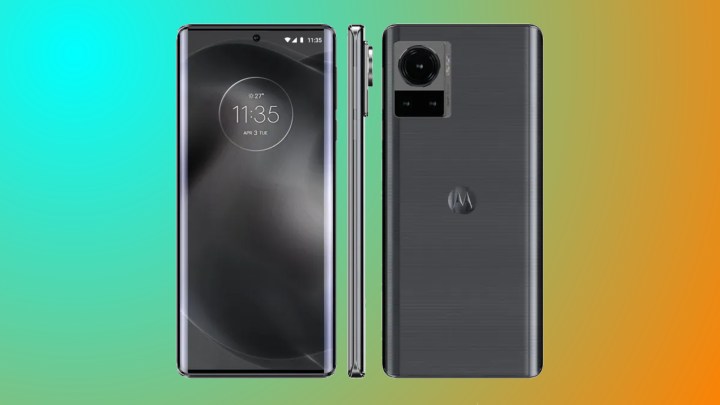Motorola today teased the X30 Pro, its next big flagship smartphone. Formerly rumored as the 200-megapixel-equipped Motorola Frontier, the company shared that it will be a camera-focused phone, and it’s expected to launch next month.
Though rumors have focused on the pixel count of the camera, Motorola emphasized the focal lengths — specifically, putting a lot of attention on the zoom capabilities. You’ll find a triple camera layout on this phone with 35mm, a 50mm, and an 85mm telephoto lens forming the basis of its camera system. This means that there won’t be any ultra-wide camera lens as has become common, but you’ll have the best portrait camera on the market (at least on paper). It’s unusual, but also a potential way for the X30 Pro’s cameras to stand out.

Renders of the Motorola Frontier were previously leaked online, showing a premium design that emphasizes the substantial camera. A full-screen design with a centered selfie camera is found on the front, while the inside reportedly features the new Snapdragon 8 Plus Gen 1 chip.
Motorola’s X30 Pro is expected to come to the U.S. and Europe as well, though the company often strips out and changes features when it goes for external releases. Take the Motorola X30 as an example. It debuted in the U.S. as the Motorola Edge Plus, while it came to the U.K. as the Motorola Edge 30 Pro. The Edge 30 debuted to mixed reviews as a very average phone. It didn’t quite stand out in any way, and it was undercut by Google’s Pixel 6 series in terms of pricing.
As for the camera, while Motorola’s hardware was exciting on paper, the company’s results have been less so. A DXOMark review of last year’s Edge 20 Pro drubs the phone for a “pretty mediocre” performance across the board. We found the phone’s camera similarly unimpressive in our Edge 20 Pro review, largely thanks to its inconsistency and poor low-light performance.
If Motorola continues simply improving on its hardware without a corresponding software upgrade, there’s little chance of it substantially improving its results. It won’t be the only camera phone coming next month. Xiaomi’s 12S, 12S Pro, and 12S Ultra are also launching soon. Motorola will certainly have a fight on its hands if it wants to stand out.
Editors' Recommendations
- Motorola just announced three new phones, and I need them right now
- Motorola’s new Android phone looks amazing, but there’s a catch
- A phone you haven’t heard of just beat the Galaxy S24 Ultra in a camera test
- If you have one of these Motorola phones, you’re getting a big Android update
- I’m sick of Motorola phones not having this one essential feature



